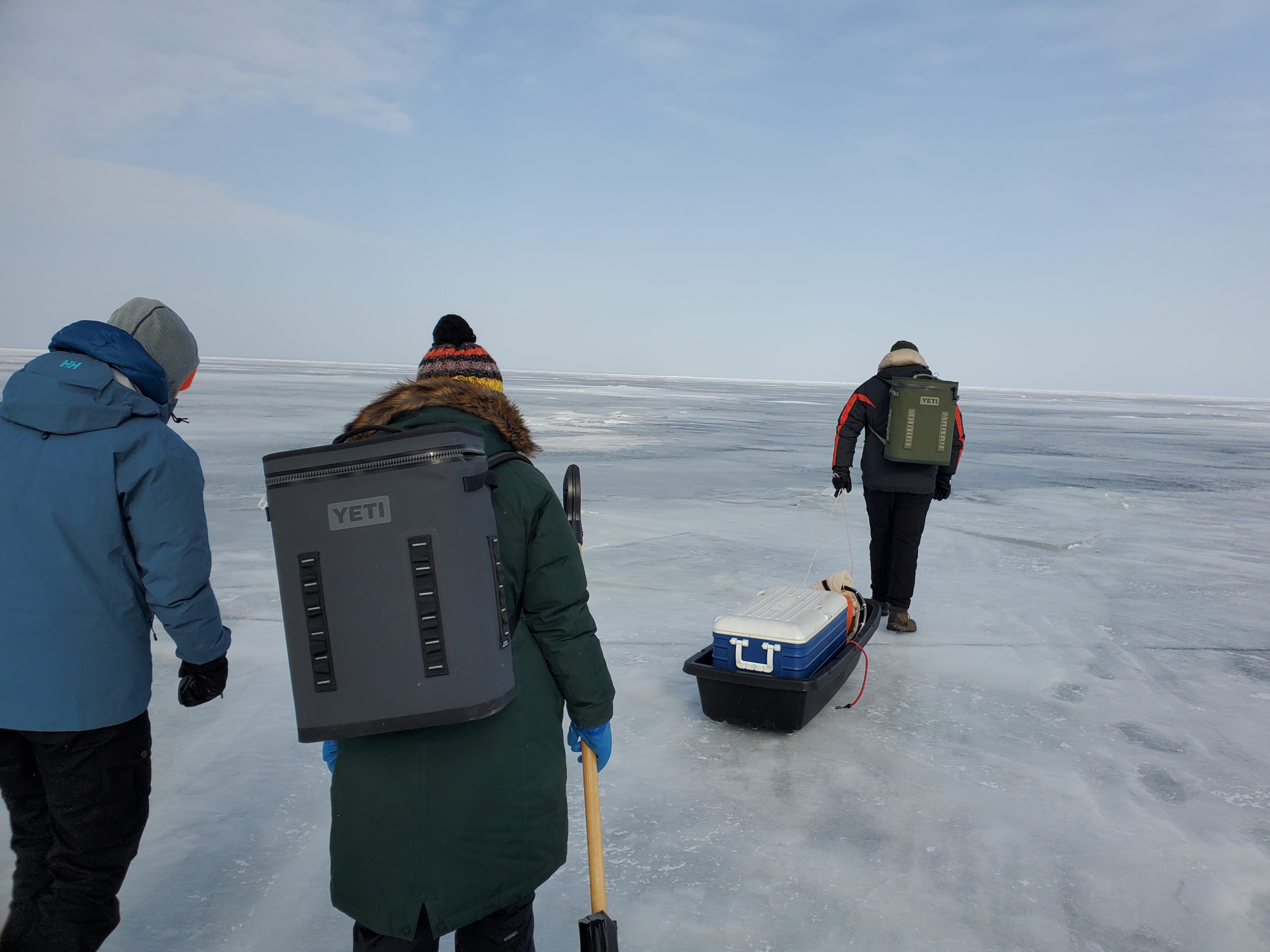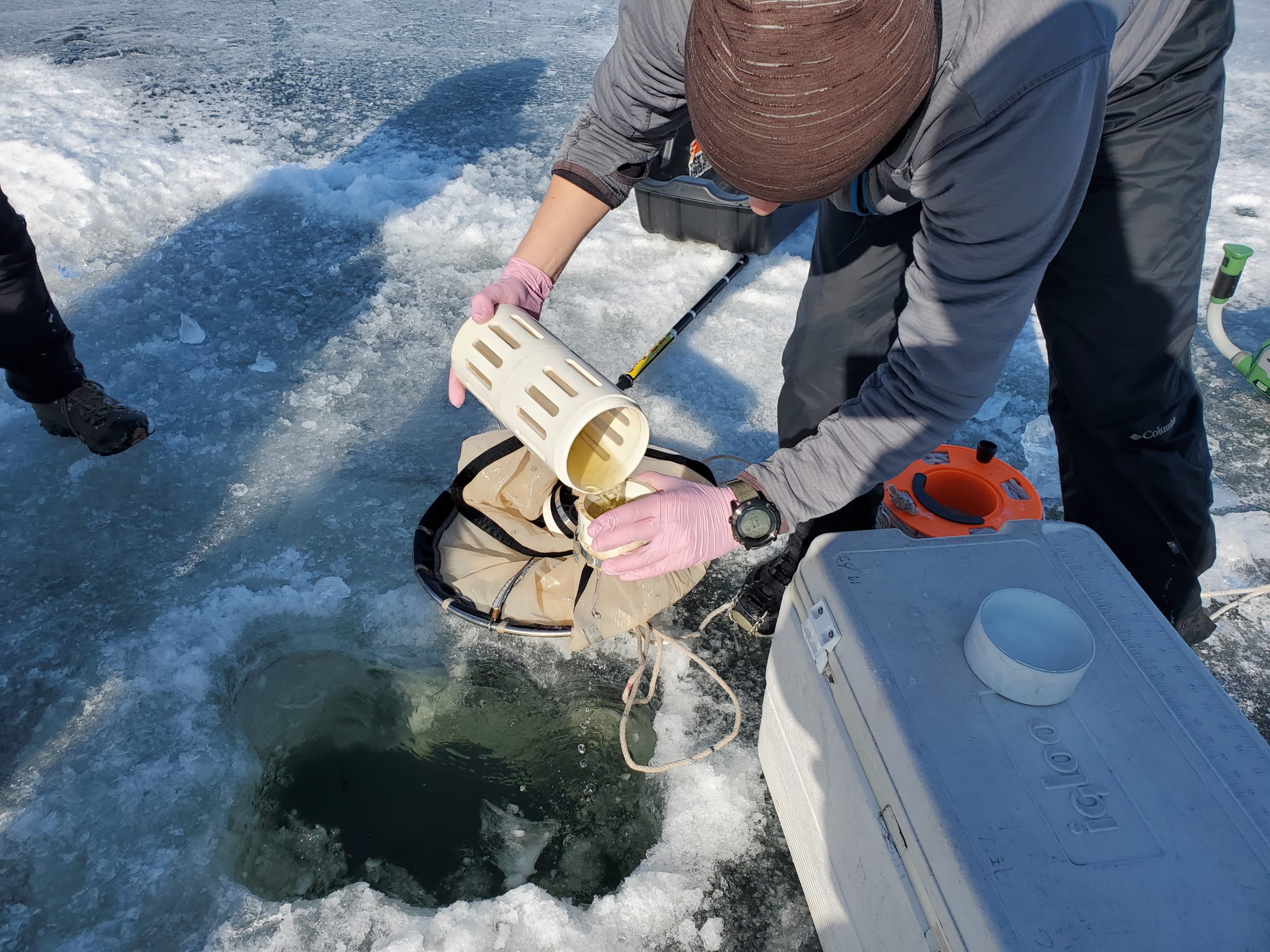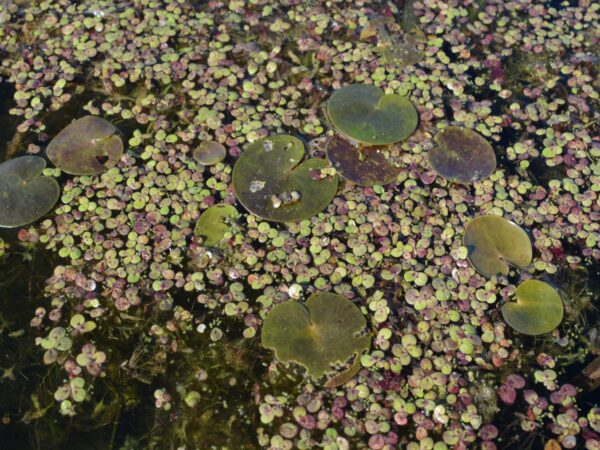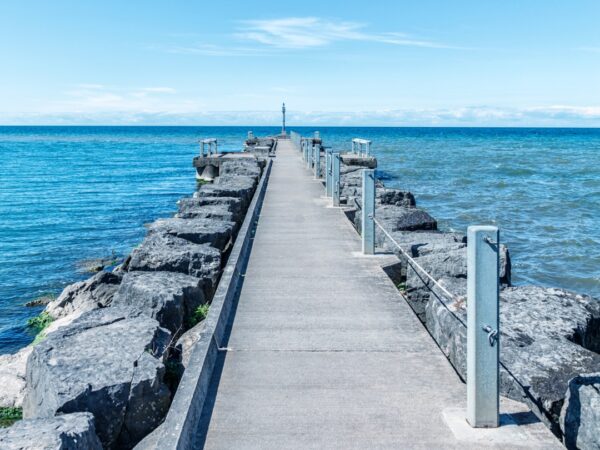
María Hernández, a University of Chicago graduate student studying microbial ecology, was both nervous and eager to traverse a frozen Green Bay. Being sure to walk slowly and carefully, she assisted fellow researchers in extracting samples of ice-cold freshwater.
“We’re out here because we usually sample in the spring and summer,” said Hernández, “So this is the first time we’re going to be sampling in the winter, and it just gives us another view into what the microbes are doing at different times of the year.”
Hernandez and her University of Chicago colleagues were joined by University of Minnesota Duluth researchers on Monday for the recently launched “Winter Grab,” a first of its kind, week-long collection event for regional researchers studying Great Lakes’ winter conditions.
Michael Henson, a postdoctoral scholar studying aquatic microbiology in the University of Chicago’s Department of Geophysical Sciences, and Hanna Renedo, a research assistant focusing on visual science communication, accompanied Hernández.

Kirill Shchapov of the University of Minnesota Duluth holds a piece of ice harvested from the frozen Green Bay. (Photo Credit: John McCracken/Great Lakes Now)
The University of Chicago team made the frozen bay their first stop, with plans to head to Lake Superior by way of Wisconsin’s Apostle Islands. The Chicago researchers had a particular interest in studying microbes, tiny single-cell organisms, living beneath the ice of Lake Michigan’s largest bay.
Hernández said researchers have typically thought there’s little to no activity under the ice in the winter months.
“We always used to think that during the winter (the ecosystem) was dormant,” said Hernández, “But now there’s a lot of hypotheses, and a lot of the sciences in working groups are developing that actually the ice is a nice environment for the microbes.”
Hernández said microbes are an integral part of a healthy, marine food web. She said the tiny organisms sustain life underwater and, as a majority of them are photosynthetic, they also help sustain life above water.
“If you take two breaths, you can say the oxygen for one came from the trees on the land,” said Hernández. “Those are the photosynthetic organisms people know of, and the second breath came from the microbes in the oceans and the lakes.”
With climate change causing Great Lakes’ winters to get warmer coupled with historically thin ice covers, Hernández and her colleagues hope to understand how microbes survive in frozen conditions and survive warming waters.
Understanding microbes is important for humanity because in a world without microbes, Hernández said, “We wouldn’t be here.”
This is the first year the Chicago research group has been able to study winter conditions of the microbial communities and the “Winter Grab” will help bring more awareness to this field of work in the coming years.
Hernández said the collection was important to establish a baseline of understanding because currently many unknowns remain about microbes.

Kirill Shchapov of the University of Minnesota Duluth filters a sample of Green Bay water to search for phytoplankton. (Photo Credit: John McCracken/Great Lakes Now)
“We at least need to understand what’s going on.”
University of Minnesota Duluth doctoral student Kirill Shchapov, a native of Siberia, is accustomed to frigid research conditions.
Shchapov said conducting Great Lakes winter research isn’t common as the environment is harsh on equipment, logistical and scheduling concerns with academic calendars, and the ever-present question of funding for the work.
Still, the Winter Grab research will help chart a course for a warming world. Shchapov said the lakes are getting warmer faster and he wants to understand how algae and plankton, two critical pieces in an aquatic system, are adapting year-round.
Accompanied by colleague Audrey Huff, who studies invasive mussels in the Great Lakes, and his partner Natasha, Shchapov drilled holes in Green Bay’s ice cover to collect freshwater samples at varying depths, all the way down to five meters, to continue his research of how plankton is impacted by winter conditions.
His team also collected phytoplankton and studied how far sunlight, a critical piece for lake life like phytoplankton to grow, reaches the water beneath the dense ice in the winter months.
“Everything is connected and now it’s changing rapidly and those changes won’t be nice,” Shchapov said. “We at least need to understand what’s going on.”
Catch more news at Great Lakes Now:
Cold Cover: Great Lakes ice forms after initial low percentage
Scientists race to gather winter data on warming Great Lakes
Featured image: Regional researchers from the University of Minnesota Duluth and University of Chicago walk along the frozen Green Bay to collect samples as a part of a regional “Winter Grab” research event. (Photo Credit: John McCracken/Great Lakes Now)




